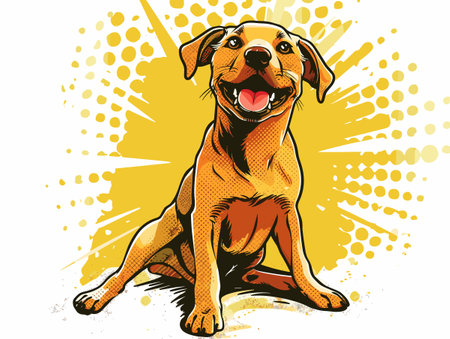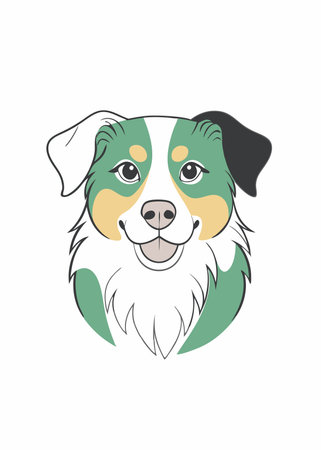Understanding Your Dogs Nutritional Needs in the UK
Feeding your dog appropriately starts with understanding their unique nutritional requirements. In the UK, factors such as breed, age, lifestyle, and even climate all play a significant role in determining what—and how much—your dog should eat. British weather patterns, the prevalence of certain breeds, and regional lifestyles mean your dogs needs may differ from those in other countries.
Breed-Specific Considerations
Different breeds have distinct energy levels and health predispositions. For instance, working breeds like Border Collies or Labradors need more calories and protein compared to smaller companion breeds such as Cavaliers or Dachshunds.
| Breed Size | Typical Energy Level | Special Considerations |
|---|---|---|
| Small (e.g., Jack Russell) | Moderate | Watch for obesity |
| Medium (e.g., Cocker Spaniel) | High | Needs regular exercise |
| Large (e.g., Labrador Retriever) | Very High | Joint support important |
Age Matters: Puppies, Adults, and Seniors
Puppies require higher protein and calorie intake for growth, while adult dogs benefit from balanced maintenance diets. Senior dogs may need reduced calories but increased joint support and fibre for digestive health.
Lifestyle & Activity Levels
A city-dwelling dog with shorter walks will have different needs than a countryside companion running across fields. Tailor their portions to match daily activity—overfeeding can lead to obesity, especially in less active pets.
Climate Influence in the UK
The UKs cooler, damp climate can affect how much energy your dog burns to stay warm. During colder months, some dogs may require slightly more food. Always monitor body condition regularly and adjust feeding accordingly.
2. Determining Correct Portion Sizes
Feeding your dog the correct portion size is essential to their health and wellbeing. In the UK, measuring the right amount depends on your dog’s age, breed, activity level, and weight. Below is practical guidance for puppies, adults, and senior dogs with examples tailored for British owners.
Puppies: Getting the Start Right
Puppies need more calories per kilogram of body weight than adults due to rapid growth. It’s best to use a digital kitchen scale for accuracy. Most UK commercial puppy foods provide feeding guidelines on the packaging – always refer to these as a starting point.
| Age (weeks) | Portions per day | Typical Daily Amount (g) – Small Breed | Typical Daily Amount (g) – Medium Breed | Typical Daily Amount (g) – Large Breed |
|---|---|---|---|---|
| 8-12 | 4 | 100-150 | 200-300 | 300-400 |
| 12-24 | 3 | 150-200 | 250-350 | 400-500 |
UK Tip:
If in doubt, ask your local vet or pet shop assistant to help you interpret package guidelines based on your puppy’s projected adult weight.
Adult Dogs: Maintaining Optimal Weight
The majority of UK dogs are adults, so portion sizes must match their current weight and activity level. For example, a moderately active 15kg Cocker Spaniel will need about 210-250g of dry food daily. Always check food labels as caloric density varies by brand.
| Dog Size | Weight Range (kg) | Daily Dry Food Amount (g) | Example UK Breed |
|---|---|---|---|
| Small | 5-10 | 75-140 | Cavalier King Charles Spaniel |
| Medium | 11-25 | 150-340 | Cocker Spaniel, Border Collie |
| Large | 26-40+ | 350-540+ | Labrador Retriever, German Shepherd |
UK Tip:
If you feed wet food or mix dry and wet, adjust portions accordingly; most brands have calculators on their websites for British owners.
Senior Dogs: Adapting for Age and Activity Level
Seniors (typically 7+ years) often require fewer calories but still need balanced nutrition. Reduce portion size slightly if your dog is less active but monitor for unintentional weight loss. Special senior formulas are widely available from UK supermarkets and pet shops.
How to Check Your Dog’s Portion is Right?
- You should be able to feel but not see your dog’s ribs.
- Your dog should have a visible waist when viewed from above.
- If unsure, book a weight check at your local UK vet practice—many offer this service free of charge.
By tailoring portions according to life stage and using British-relevant examples and resources, you ensure your dog maintains a healthy weight throughout their life in the UK.

3. Meal Frequency and Feeding Times
Establishing the right meal frequency and feeding schedule is crucial for your dogs health and wellbeing. British pet owners often balance busy workdays with their pets’ needs, so it’s important to adopt routines that fit both your lifestyle and your dogs requirements.
Ideal Number of Meals Per Day
| Dog Age/Size | Recommended Meals per Day |
|---|---|
| Puppies (up to 6 months) | 3-4 |
| Adult Dogs (small & medium breeds) | 2 |
| Adult Dogs (large breeds) | 2 |
| Seniors (7+ years) | 2 (may vary based on health) |
Best Times to Feed Your Dog in the UK
A typical British routine involves feeding dogs in the morning before leaving for work and again in the early evening, coinciding with family mealtimes. This schedule ensures your dog isn’t left hungry during long hours alone and fits seamlessly into the average UK household timetable.
Sample Daily Feeding Schedule:
| Time of Day | Feeding Activity |
|---|---|
| 07:00 – 08:00 | First meal of the day, before work or school run |
| 17:00 – 19:00 | Second meal, aligning with dinner time or after returning home |
Top Tips for Consistency:
- Stick to set times: Dogs thrive on routine, so feed at similar times each day.
- Avoid late-night meals: Feeding too late can disrupt digestion and sleep patterns.
- Adjust for activity levels: If your dog gets more exercise on certain days, slight timing adjustments may be beneficial.
- Monitor water intake: Always provide fresh water alongside meals, especially if feeding dry kibble.
This approach not only supports your dog’s digestion and energy levels but also makes feeding a predictable and enjoyable part of daily life in the UK.
4. Choosing the Right Food: Dry, Wet, or Raw
Choosing the best type of food for your dog is crucial for their health and well-being. In the UK, pet owners typically choose between dry (kibble), wet (tinned), and raw diets. Each has its own benefits and drawbacks, and it’s important to select an option that suits your dog’s needs as well as your lifestyle.
Dry Food (Kibble)
Kibble is one of the most popular choices among UK dog owners due to its convenience, affordability, and long shelf life. Well-known brands such as Burgess, Lily’s Kitchen, and James Wellbeloved offer a range of recipes tailored to different sizes, ages, and dietary requirements.
Pros & Cons of Kibble
| Pros | Cons |
|---|---|
| Easy to store and serve Affordable Promotes dental health Wide variety available in supermarkets and pet shops |
Can be less palatable for picky eaters May contain fillers or artificial additives in lower quality brands Requires access to fresh water at all times |
Wet Food (Tinned)
Tinned or tray foods are often more appealing to dogs due to their aroma and texture. Popular UK brands include Butcher’s, Natures Menu, and Cesar.
Pros & Cons of Wet Food
| Pros | Cons |
|---|---|
| Highly palatable Hydrating for dogs who don’t drink much water Suitable for dogs with dental issues or missing teeth |
More expensive per serving than kibble Shorter shelf life once opened Can contribute to dental plaque if not balanced with dental chews or brushing |
Raw Diets (BARF and Commercial Raw)
The raw feeding trend has gained popularity in the UK, with many owners opting for either homemade or commercial raw diets such as those from Nutriment, Paleo Ridge, and Natures Menu Raw. This approach aims to mimic a natural canine diet but requires careful planning.
Pros & Cons of Raw Feeding
| Pros | Cons |
|---|---|
| No artificial additives Potentially glossier coats and healthier skin Tailored nutrition for individual needs Often grain-free by default |
Time-consuming preparation if homemade Risk of nutritional imbalance without expert guidance Requires freezer space for storage Potential risk of bacterial contamination if not handled properly Some vets remain cautious about raw feeding safety in domestic settings |
Summary Table: Comparison of Dog Food Types in the UK
| Kibble (Dry) | Tinned (Wet) | Raw Diets | |
|---|---|---|---|
| Main Brands (UK) | Burgess, Lily’s Kitchen, James Wellbeloved | Butcher’s, Natures Menu, Cesar | Nutriment, Paleo Ridge, Natures Menu Raw |
| Shelf Life (Opened) | Weeks to months if sealed properly | A few days refrigerated after opening | A few days refrigerated; longer if frozen |
| Convenience Level | High – easy storage/serving | Moderate – needs refrigeration once opened | Low – needs preparation/freezing/thawing time |
Selecting the right food depends on your dogs age, breed, health conditions, taste preferences, and your own routine. For tailored advice, consult your local vet or a canine nutritionist familiar with current UK best practices.
5. Best Practices and Healthy Habits
Safe Food Storage
Proper food storage is essential for keeping your dog’s meals fresh and free from contamination. In the UK, fluctuating temperatures and humidity can quickly spoil open dog food, especially wet varieties. Always store dry kibble in an airtight container in a cool, dry place. Wet or raw food should be refrigerated immediately after opening and used within the time recommended on the packaging.
| Food Type | Storage Method | Recommended Duration |
|---|---|---|
| Dry Kibble | Airtight container, room temperature | Up to expiry date |
| Wet Food (opened) | Refrigerator, covered | 2-3 days |
| Raw Food | Refrigerator or freezer | 1-2 days (fridge), up to 6 months (freezer) |
Fresh Water Access
Your dog must always have access to clean, fresh water. Change water at least twice daily, more frequently in hot weather or if using hard tap water common in some UK regions. Use ceramic or stainless steel bowls to prevent bacteria build-up and limescale deposits.
Treat Guidelines
Treats should account for no more than 10% of your dog’s daily caloric intake. Opt for low-fat, natural treats that are free from artificial colours and preservatives. Be cautious with common British table scraps such as roast bones, cheese, or rich gravies, as these can upset your dog’s stomach or even be dangerous.
| Treat Type | Recommended Portion Size | Frequency |
|---|---|---|
| Dried Meat Treats | 1-2 pieces (depending on size) | Daily limit: up to 10% of calories |
| Vegetable Snacks (carrot, cucumber) | Sliced, small handful | A few times per week |
| Biscuit Treats | 1-2 small biscuits | Sparingly; check calorie content |
Avoiding Common UK Feeding Pitfalls
- No Tea or Chocolate: Never give tea (even decaf) or chocolate—both are toxic to dogs.
- Bones from Roasts: Avoid cooked bones from Sunday roasts as they can splinter and cause internal injuries.
- Lawn Chemicals: Don’t feed dogs grass or plants that may have been treated with fertilisers or weed killers common in UK gardens.
- Puddles & Streams: Discourage drinking from puddles or streams during countryside walks due to risk of leptospirosis and other pathogens.
- Poor Quality Leftovers: Resist the urge to regularly feed leftovers—stick to balanced commercial diets formulated for UK pets.
Key Actions for Everyday Routine:
- Wash food and water bowls daily.
- Check expiry dates on all feeds and treats.
- Monitor your dog’s weight monthly and adjust portions if needed.
- If unsure about any ingredient or treat, consult a local vet familiar with British pet food brands.
Your Commitment Matters!
Caring for your dog’s nutrition in the UK isn’t just about what you feed but how you manage their environment. Follow these best practices to keep your canine companion healthy, happy, and thriving across all seasons.
6. Reading UK Pet Food Labels
Understanding how to read and interpret dog food labels is essential for every UK dog owner. British pet food packaging follows strict regulations to ensure safety, quality, and transparency. Here’s a step-by-step guide to help you confidently navigate pet food labels in the UK.
Step 1: Check for Legal Compliance
All commercial dog food sold in the UK must comply with FEDIAF (European Pet Food Industry Federation) guidelines and UK law. Ensure the packaging displays:
- Name and address of the manufacturer or distributor
- Product description (e.g., “Complete” or “Complementary”)
- Net weight
- Batch number and best before date
Step 2: Identify the Product Type
The terms “Complete” and “Complementary” are key. Complete foods provide all essential nutrients; complementary foods should only be fed alongside other products.
| Label Term | Meaning |
|---|---|
| Complete | Sufficient as a sole diet for your dog |
| Complementary | Must be combined with other foods for nutritional balance |
Step 3: Examine the Ingredient List
Ingredients are listed in descending order by weight. Look for clear descriptions (e.g., “chicken breast 30%”) rather than vague terms like “meat derivatives.” In the UK, higher quality brands tend to specify individual meats and sources.
Tip:
Avoid products listing cereal or grain as the first ingredient if your dog requires a high-protein or grain-free diet.
Step 4: Analyse Nutritional Information
Nutritional analysis will include crude protein, fat content, fibre, and ash (minerals). Compare these figures with your dog’s dietary needs based on age, breed, and activity level.
| Nutrient | Typical Range (Dry Food) |
|---|---|
| Protein | 18–30% |
| Fat | 8–20% |
| Fibre | 2–5% |
| Ash | 5–8% |
Step 5: Review Feeding Guidelines and Claims
The label should offer recommended portion sizes based on your dog’s weight. Treat these as starting points and adjust according to your dog’s condition. Be cautious of marketing claims such as “natural,” “hypoallergenic,” or “veterinarian approved”—these are not legally regulated terms in the UK.
Summary Table: Key Label Elements to Check
| Element | What to Look For? |
|---|---|
| Name & Address | Clear details of manufacturer/distributor in the UK/EU |
| Description | “Complete” for full nutrition; “Complementary” for mix-ins/treats |
| Ingredients List | Specific meats named; minimal fillers or artificial additives |
| Nutritional Analysis | Suits your dogs age, size, and activity level requirements |
| Date Codes & Batch Numbers | Ensures freshness and traceability in case of recalls |
| Feeding Guide/Instructions | Covers different weights and life stages as applicable |
Actionable Tip:
If unsure about any label information, consult your vet or a certified pet nutritionist familiar with UK standards before making changes to your dog’s diet.

